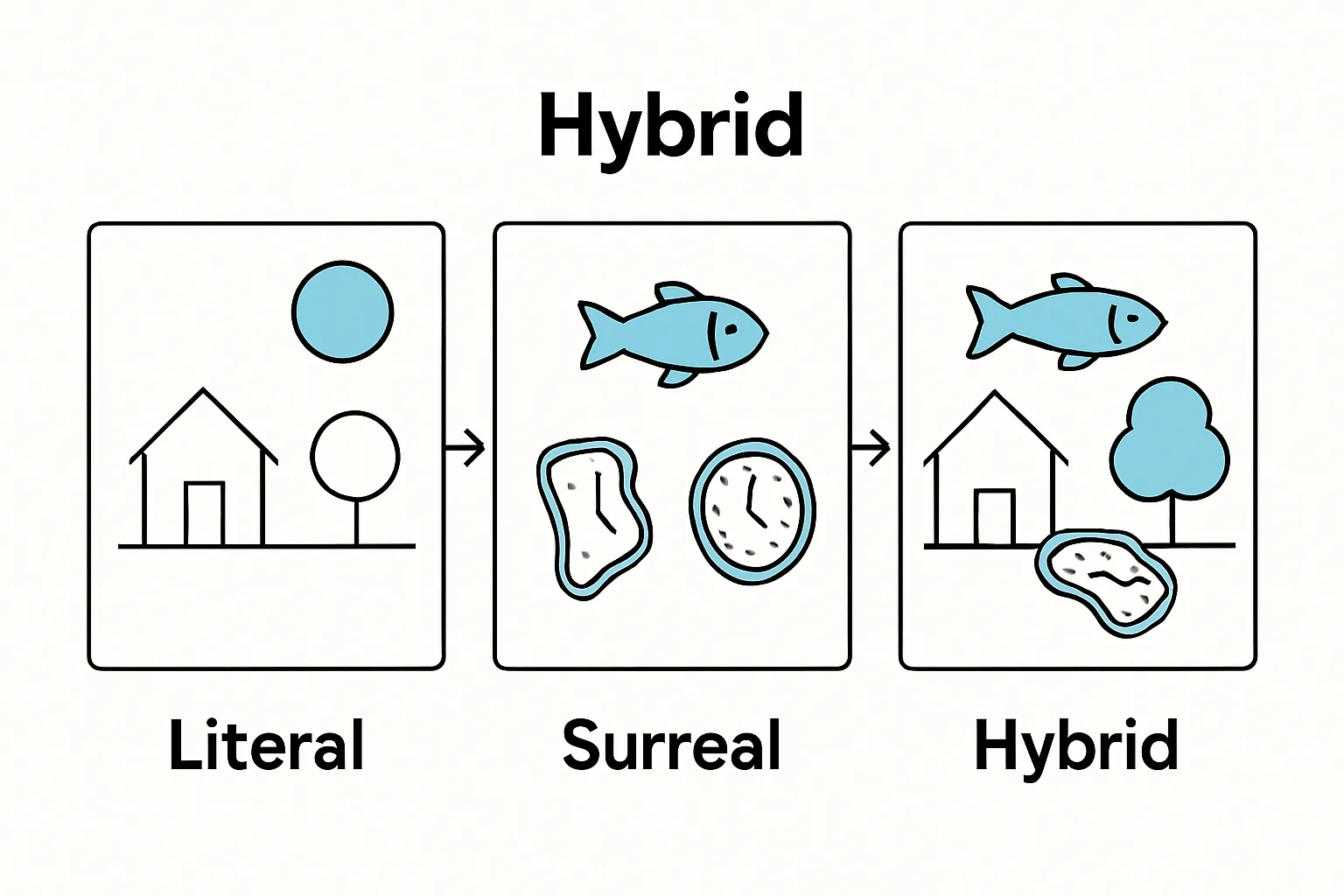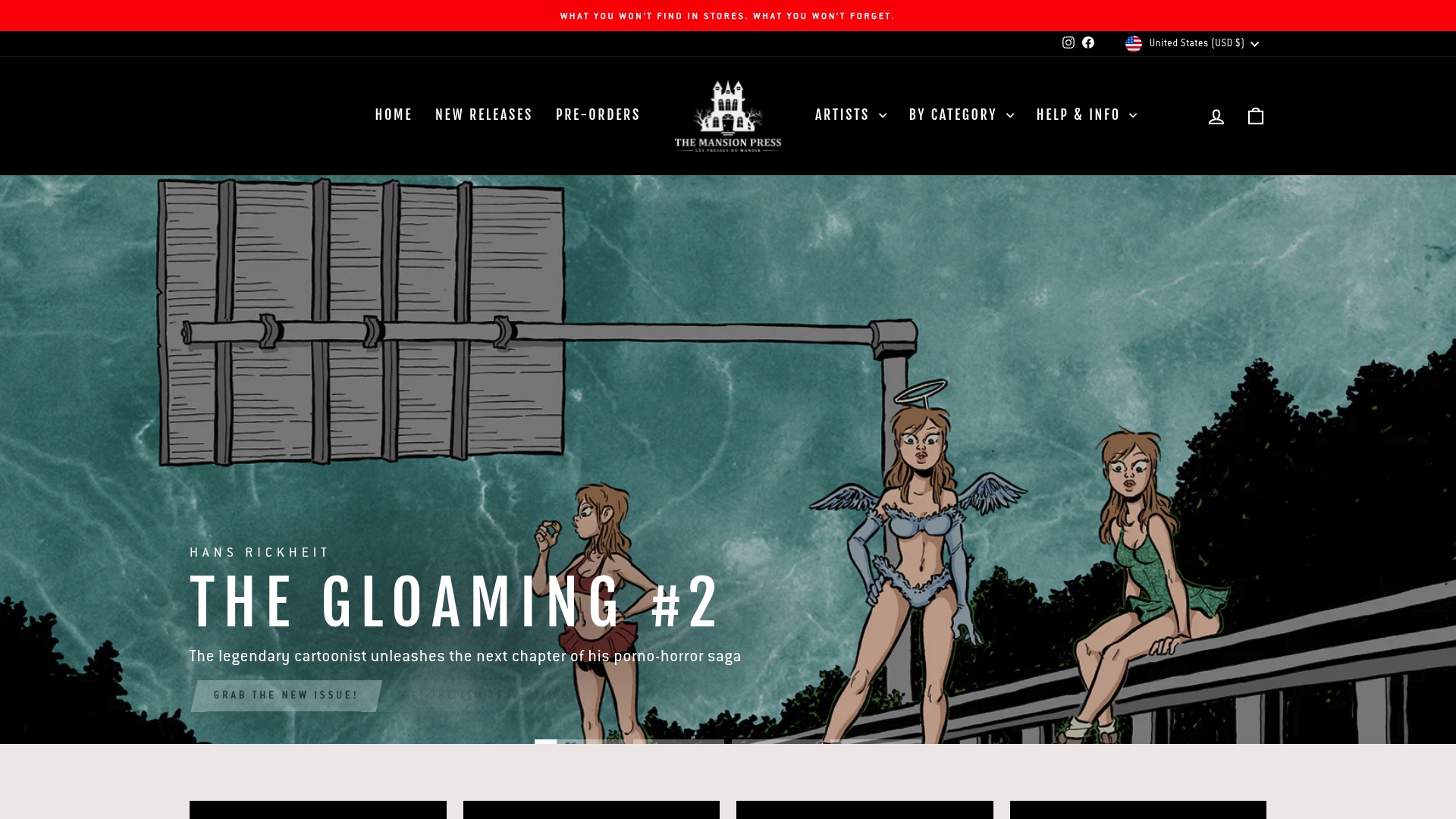Understanding Surrealism in Visual Storytelling
Surrealism in visual storytelling has changed the way people think about art and meaning. Some artists completely throw out typical story rules and instead use dreamlike visuals to engage the viewer’s subconscious. It might sound abstract, but the impact is very real—the biggest names in surrealist art, like Salvador Dali and René Magritte, built careers on images that break every narrative expectation known in the art world. The wildest part is that this style is not just for the galleries. Surrealism is now fueling graphic novels, film, and digital media, making audiences question what is real and what is imagined.
Table of Contents
- What Is Surrealism And Its Role In Visual Storytelling?
- The Importance Of Surrealism In Artistic Expression
- Key Techniques And Elements Of Surrealism In Art
- The Influence Of Surrealism On Comics And Graphic Novels
- Real-World Examples Of Surrealism In Visual Narratives
Quick Summary
| Takeaway | Explanation |
|---|---|
| Surrealism defies traditional narratives | Surrealism uses dream-like imagery to challenge linear storytelling methods, inviting multiple interpretations. |
| Psychological landscapes are key | Artists convey complex emotions and social critiques through non-literal, imaginative representations, enhancing viewer engagement. |
| Immersive experiences engage audiences | By employing unexpected juxtapositions and symbolic visuals, artworks foster active interpretation and deeper meaningful connections. |
| Surrealist techniques disrupt visual patterns | Techniques like automatism and dreamlike imagery allow artists to explore subconscious thought processes. |
| Surrealism enriches graphic storytelling | Contemporary graphic novels utilize surrealist elements to create sophisticated narratives that delve into psychological experiences. |
What is Surrealism and Its Role in Visual Storytelling?
Surrealism represents a revolutionary artistic movement that transcends traditional narrative boundaries, transforming visual storytelling into a profound exploration of the unconscious mind. By challenging rational thought and embracing dream-like imagery, surrealism in visual storytelling opens unprecedented pathways for creative expression and audience interpretation.
The Philosophical Foundations of Surrealist Visual Language
At its core, surrealism emerged as a radical philosophical approach that sought to liberate human creativity from the constraints of logical reasoning. Artists exploring unconscious landscapes rejected conventional storytelling methods, instead presenting visual narratives that mirror the unpredictable nature of dreams and psychological experiences. Pioneers like Salvador Dali and René Magritte demonstrated how visual storytelling could transcend literal representation, creating immersive experiences that challenge viewers’ perceptual boundaries.
Key characteristics of surrealist visual storytelling include:
- Unexpected juxtapositions of unrelated imagery
- Symbolic representations of psychological states
- Distortion of physical reality and spatial relationships
- Deliberate disruption of linear narrative structures
Transformative Impact on Narrative Techniques
Surrealism fundamentally reimagined how stories could be told visually. Rather than presenting linear, predictable narratives, visual storytellers using surrealist techniques create immersive experiences that invite multiple interpretations. This approach allows audiences to engage more deeply with the artwork, decoding symbolic messages and exploring subconscious emotional landscapes.
By embracing the irrational and the unexpected, surrealist visual storytelling breaks free from traditional narrative constraints. Artists and storytellers can now communicate complex psychological states, social critiques, and personal experiences through non-literal, imaginative representations. Whether in graphic novels, animation, or fine art, surrealism continues to challenge viewers’ perceptions and expand the boundaries of visual communication.
For readers wanting to explore surrealism in graphic narratives, our comprehensive guide offers deeper insights into this transformative artistic movement.
The Importance of Surrealism in Artistic Expression
Surrealism represents more than an artistic movement it is a profound philosophical approach to understanding human creativity, emotion, and perception. By challenging conventional artistic boundaries, surrealism provides artists with a unique lens to explore complex psychological landscapes and communicate nuanced experiences beyond literal representation.
Psychological Liberation Through Artistic Expression
Artists exploring unconscious imagery use surrealism as a powerful tool for psychological liberation. This artistic approach allows creators to bypass rational constraints, enabling them to visualize internal emotional states that traditional artistic methods cannot capture. Surrealist art becomes a form of visual language where dreams, memories, and subconscious impulses merge into compelling narratives.
Key psychological benefits of surrealist artistic expression include:
- Revealing hidden emotional landscapes
- Challenging societal perceptions and norms
- Providing cathartic emotional release
- Exploring complex psychological experiences
Expanding Creative Boundaries and Narrative Potential
Surrealism fundamentally transforms artistic expression by dismantling traditional representational frameworks. Contemporary visual storytellers leverage surrealist techniques to create immersive experiences that transcend linear storytelling. This approach enables artists to communicate abstract concepts, social critiques, and personal experiences through unexpected visual metaphors.
By embracing non-linear, imaginative representations, surrealist artists challenge audiences to engage more deeply with artwork. They invite viewers to move beyond passive observation, encouraging active interpretation and personal reflection. Whether manifesting in painting, graphic novels, film, or digital media, surrealism continues to push the boundaries of creative expression.
For those interested in exploring experimental illustration techniques, our comprehensive guide offers deeper insights into innovative artistic approaches.
Key Techniques and Elements of Surrealism in Art
Surrealist art employs a complex array of techniques that challenge traditional artistic representation, transforming visual storytelling into a profound exploration of the subconscious. By deliberately disrupting expected visual patterns, artists create immersive experiences that invite viewers to question their perceptual understanding.
To clarify the foundational techniques used by surrealist artists, the table below summarizes key methods and their descriptions.
| Technique | Description |
|---|---|
| Automatism | Creating art spontaneously without conscious control to access the subconscious mind. |
| Unexpected Object Juxtapositions | Placing unrelated elements together to provoke surprise and new meaning. |
| Transformation of Familiar Objects | Altering everyday items to defy expectation and communicate psychological ideas. |
| Scale and Perspective Distortions | Manipulating size and spatial relationships for dreamlike or uncanny effects. |
| Dreamlike Imagery and Symbolism | Using otherworldly scenes and icons to evoke emotional and psychological depth. |
Foundational Techniques of Surrealist Creation
Surrealist artists utilize specialized techniques to bypass rational thinking and access deeper psychological landscapes. Automatism stands as a primary method, where artists create spontaneous, unfiltered artwork without conscious control. This approach allows unexpected imagery and symbols to emerge, revealing subconscious thought processes and emotional undercurrents.
Key surrealist artistic techniques include:
- Automatism (spontaneous drawing or writing)
- Unexpected object juxtapositions
- Transformation of familiar objects
- Scale and perspective distortions
- Dreamlike imagery and symbolism
Visual Elements and Symbolic Language
Surrealist art develops a unique visual language that transcends literal representation. Artists strategically manipulate visual elements to create tension, surprise, and psychological depth. By distorting familiar objects, changing scale, or placing elements in impossible spatial relationships, they challenge viewers’ perceptual expectations.

The symbolic power of surrealist art lies in its ability to communicate complex emotional and psychological states through visual metaphors. Artists like Salvador Dali and René Magritte masterfully employed techniques that transform mundane objects into powerful symbolic representations, inviting multiple interpretations and deep personal reflections.
For those interested in exploring unique illustration styles, our comprehensive guide offers deeper insights into the transformative potential of artistic techniques.
The Influence of Surrealism on Comics and Graphic Novels
Surrealism has profoundly transformed the landscape of visual storytelling, particularly within the realm of comics and graphic novels. By introducing non linear narrative structures and challenging conventional storytelling techniques, surrealist principles have revolutionized how artists conceptualize and communicate complex psychological experiences through sequential art.
Narrative Revolution in Sequential Art
Contemporary graphic novelists have embraced surrealist techniques to deconstruct traditional narrative frameworks. This approach allows creators to explore psychological landscapes that extend beyond literal representation, transforming comics from mere entertainment into sophisticated artistic expressions. By incorporating dreamlike imagery, unexpected visual metaphors, and non sequential storytelling, artists can communicate nuanced emotional states that traditional linear narratives cannot capture.
Key surrealist influences in graphic novels include:
- Disrupting linear narrative progression
- Visualizing subconscious mental states
- Creating metaphorical visual landscapes
- Challenging reader perception and expectations
- Blending reality with imaginative constructs
Psychological Depth and Visual Metaphor
Surrealist principles enable graphic novelists to transform comics into complex psychological explorations. Artists like David Lynch and Neil Gaiman have masterfully employed surrealist techniques to create immersive narrative experiences that blur boundaries between reality, imagination, and psychological experience. These works invite readers to engage with the artwork not just as passive consumers, but as active interpreters of complex symbolic language.
The transformative power of surrealism in graphic novels lies in its ability to represent internal emotional landscapes through visual metaphors. By breaking traditional representational constraints, artists can communicate complex psychological experiences that transcend verbal or linear storytelling.

For those intrigued by avant-garde graphic novel approaches, our comprehensive guide offers deeper insights into these revolutionary storytelling techniques.
Real-World Examples of Surrealism in Visual Narratives
Surrealism transcends theoretical concepts, manifesting powerfully through diverse visual narratives that challenge perception and invite profound psychological exploration. By examining concrete examples, we can understand how artists transform abstract principles into compelling storytelling experiences that resonate deeply with audiences.
Pioneers of Surrealist Visual Storytelling
Artists like Moebius revolutionized visual storytelling by creating intricate worlds where reality and imagination seamlessly intersect. French comic artist Jean Giraud, known professionally as Moebius, developed elaborate visual landscapes that defied conventional narrative structures. His work in graphic novels such as “The Incal” demonstrates how surrealist techniques can create immersive universes that challenge readers’ understanding of spatial and temporal relationships.
Notable surrealist visual narrative characteristics include:
- Dreamlike environmental transformations
- Non linear storytelling sequences
- Symbolic character representations
- Unexpected spatial relationships
- Psychological landscape visualizations
Contemporary Surrealist Narrative Approaches
Modern visual storytellers continue to expand surrealist principles across multiple mediums. Graphic novelists and illustrators like Dave McKean and David Mack push boundaries by integrating mixed media, abstract imagery, and psychological symbolism. Their work demonstrates how surrealist techniques allow artists to communicate complex emotional states that transcend traditional representational methods.
These contemporary artists transform visual narratives by treating images as fluid psychological landscapes. By disrupting expected visual patterns, they invite audiences to engage with artwork as an active interpretative experience, where meaning emerges through personal and collective unconscious connections.
For deeper insights into storytelling through abstract visuals, our comprehensive guide explores the intricate world of innovative narrative techniques.
Discover Surrealist Art You Can Hold in Your Hands
Exploring surrealism in visual storytelling exposes the challenge many art lovers face: finding artwork and graphic novels that go beyond the ordinary and stir deep emotions. The article reveals how surrealist creators use dreamlike imagery and symbolic language to evoke powerful responses, yet so much of this transformative art remains hard to access through mass-market channels.

Ready to experience the world of surrealist expression for yourself? At The Mansion Press, you can own rare artbooks, limited-edition comics, and original pieces crafted by visionaries who redefine what visual storytelling can mean. Whether you collect or simply crave new inspiration, start your search with our exclusive collection and let your imagination roam. Do not miss out on art that challenges reality—see what is waiting for you at The Mansion Press or begin your journey by exploring unique illustration styles today.
Frequently Asked Questions
What are the key characteristics of surrealism in visual storytelling?
Surrealism often includes unexpected juxtapositions of unrelated imagery, symbolic representations of psychological states, distortion of physical reality, and deliberate disruption of linear narrative structures.
How does surrealism transform traditional narrative techniques in art?
Surrealism reimagines storytelling by creating immersive experiences that invite multiple interpretations, allowing artists to communicate complex psychological states and social critiques through imaginative representations.
What psychological benefits can artists achieve through surrealist expression?
Surrealism allows artists to reveal hidden emotional landscapes, challenge societal perceptions, provide cathartic emotional release, and explore complex psychological experiences beyond rational constraints.
How has surrealism influenced contemporary comics and graphic novels?
Surrealism has revolutionized comics by introducing non-linear narrative structures, visualizing subconscious mental states, and challenging reader perceptions, transforming them into sophisticated artistic expressions that convey nuanced emotional experiences.

